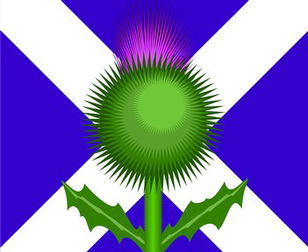1. Arguably the most famous work of the Scottish national poet, Robert Burns, is a poem and song that is traditionally performed on Hogmanay. Can you name it?
From Quiz Best Laid Schemes
Answer:
Auld Lang Syne
Hogmanay is the Scottish name for December 31st and is particularly used to refer to the New Year celebrations - traditionally a bigger event on the Scottish calendar than Christmas. Although written in the Scots language, the performance of 'Auld Lang Syne' is definitely not limited to Scotland. It is sung right around world (particularly in English-speaking countries) and uses the tune of a traditional Scottish folk song. Tradition also suggests that groups performing the song should cross arms and link hands (i.e. use their right hand to link with their left-hand neighbour and vice versa), although there is some controversy over at what point during the song the crossed arms part should be introduced - in Scotland it is for the last verse only, while elsewhere the arms are crossed from the start. The British press were apparently unaware of this nuance when they berated Queen Elizabeth II for 'getting it wrong' when she followed the Scottish version of the tradition at the Millennium celebrations.
What many people don't realise is that Burns's poem includes five separate verses, all with different lyrics. Most people will just be familiar with the English version of the first verse and chorus (and repeat them over and over):
"Should old acquaintance be forgot,
and never brought to mind?
Should old acquaintance be forgot,
and old lang syne?"
"For auld lang syne, my dear,
for auld lang syne,
we'll take a cup of kindness yet,
for auld lang syne."
 This is my second quiz about the Scottish poet, Robert Burns. See how many questions you can answer correctly. Good luck!
This is my second quiz about the Scottish poet, Robert Burns. See how many questions you can answer correctly. Good luck!  This is my second quiz about the Scottish poet, Robert Burns. See how many questions you can answer correctly. Good luck!
This is my second quiz about the Scottish poet, Robert Burns. See how many questions you can answer correctly. Good luck!  = Top 5% Rated Quiz,
= Top 5% Rated Quiz,
 Top 10% Rated Quiz,
Top 10% Rated Quiz,
 Top 20% Rated Quiz,
Top 20% Rated Quiz,
 A Well Rated Quiz
A Well Rated Quiz